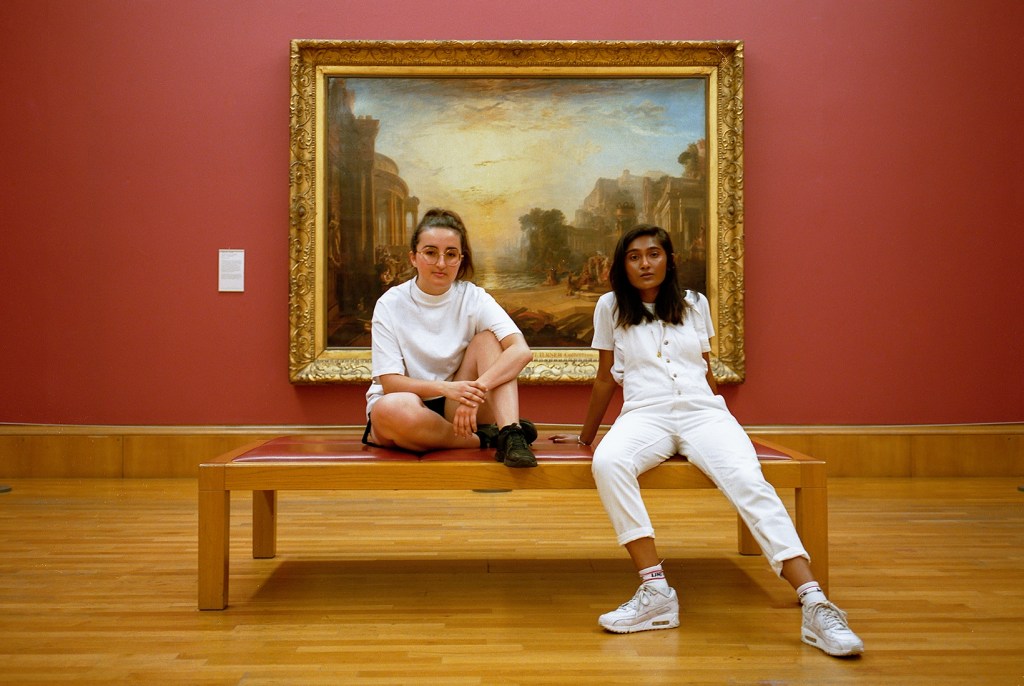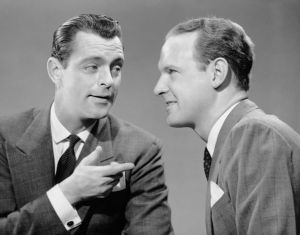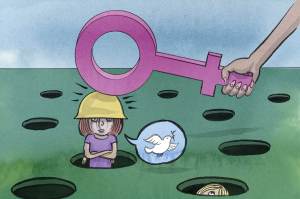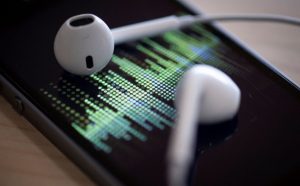The White Pube started life as an influential art blog, written by Zarina Muhammad and Gabrielle de la Puente. The name announced iconoclastic intent, playing on the White Cube gallery — which certainly deserves mockery (like a city law firm, it has outposts in Hong Kong and Manhattan). But The White Pube podcast is as inanely conventional as the gallery it makes fun of.
Each episode is an hour-long salvo by the hosts, or ‘art critic baby gods’, and as with their exhibition reviews — rated with emojis, not stars — conversation is appealingly informal and spontaneous. But they have little of interest to say, especially about their ostensible subject. Three episodes into this art criticism podcast, hardly an artwork has featured. Unsuspecting listeners must instead swallow a salmagundi of tedium, including a detailed account of the hosts’ driving lessons (Muhammad passed on the third attempt; de la Puente prefers manual to automatic; tune in for more revelations).
What they do discuss is pop culture, especially reality TV, stemming from their rejection of culture’s high/low divide (in their scheme: ‘pop or snobby’). This hardly makes them the art-world agitators they pose as. Pop culture has from the 1960s onwards thoroughly captured artists’ imaginations. Far from being an anti-establishment attitude, it gets you invited to Buckingham Palace, as the great pop artist Sir Peter Blake has found.
The White Pube’s bolshie style masks conformism. Expect modish nostrums (diversity good, capitalism bad), which aren’t necessarily wrong — I applaud them for endowing a working-class writers’ grant —but very safe. The art establishment has duly hailed them. Muhammad is on a residency at the ICA. De la Puente runs an Arts Council-funded gallery. Episode one relates endless invitations to teach and lecture at art schools and galleries, including being flown in to Norway’s Bergen Kunsthall. Clearly, they’re telling the art establishment what it wants to hear.
Contemporary art’s inaccessibility rightly rankles them. But really they collude in it. What repels the public isn’t ‘posh accents’; it’s what many see as the solipsism of conceptual art (and its outgrowths, performance and video art) that monopolizes contemporary spaces and the hyperinflated market. A germ of fruitful critique crops up when they fleetingly admit art school never taught them to make art. ‘But it’s good for the discourse,’ they say. Some would say this is, at heart, conceptual art’s great handicap. It’s essentially rhetorical, reducible to punchlines, to statements. Why turn up?
Although they promise that ‘Next episode we’ll have some actual art content’, their excuse for evading it thus far betrays their meagre conception of art: ‘Times are bizarre enough without adding art in there for extra discomfort.’ Good luck persuading the public that’s all art is for: discomfort. What about solace? It’s perverse, at this time of apocalyptic anxiety, to spurn art’s capacity to envision tragedy with beauty and grace — even the terror of impending extinction, as Poussin does, sublimely, in ‘Le Déluge’.
[special_offer]
Critics sincere in their anti-elitism communicate to the public the enriching possibilities of art; The White Pube prefers to limit them. ‘I’m done with art’, goes one of their catchphrases, whenever art fails their criteria — to be high-concept, discomfiting, never beautiful, always demographically inclusive, absolutely ‘self-critical’ (i.e. navel-gazing), unambiguously anti-capitalist and yet at the same time infused by pop culture. In all of this, they submit to the pieties of the ossified art bureaucracy that finances them.
Unsurprisingly, they themselves admit such art feels like ‘doing work’. So instead, in hock to the capitalism they abhor, they exalt Keeping Up With the Kardashians, a multimillion dollar franchise, and YouTube, the multibillion-dollar maw of big tech, which swallows up aesthetic values and spits out those of the market. ‘And [YouTube’s] algorithm is pretty reliable,’ they add. ‘The best.’ What’s the point of them as critics, if culture is straightforwardly quantifiable? What is objectively quantifiable is inequality, which distorts who gets to practice art. Yet, zonked on Baudrillard, they claim: ‘There’s no such thing as a fact.’
I wish this energetic, intelligent duo didn’t squander their gifts in this way. They themselves invoke the metaphor of fast food, of the ‘drive-thru’ — transactional and mindless — for their approach to culture: ‘It’ll just go out the other end, it’ll pass through.’ It’s an astute metaphor. Muhammad and de la Puente create as they consume: this podcast just passes through and goes out the other end.
This article was originally published in The Spectator’s UK magazine. Subscribe to the US edition here.


















